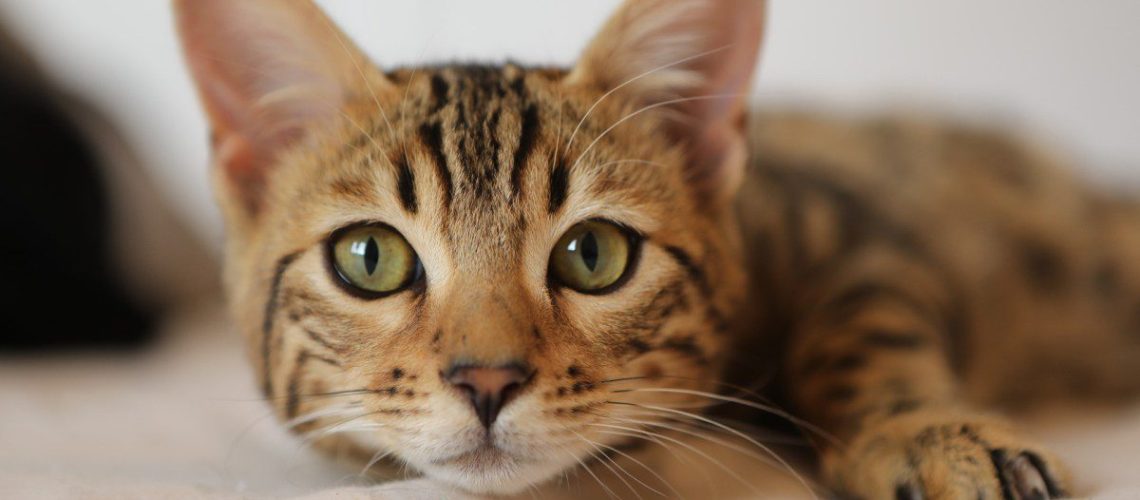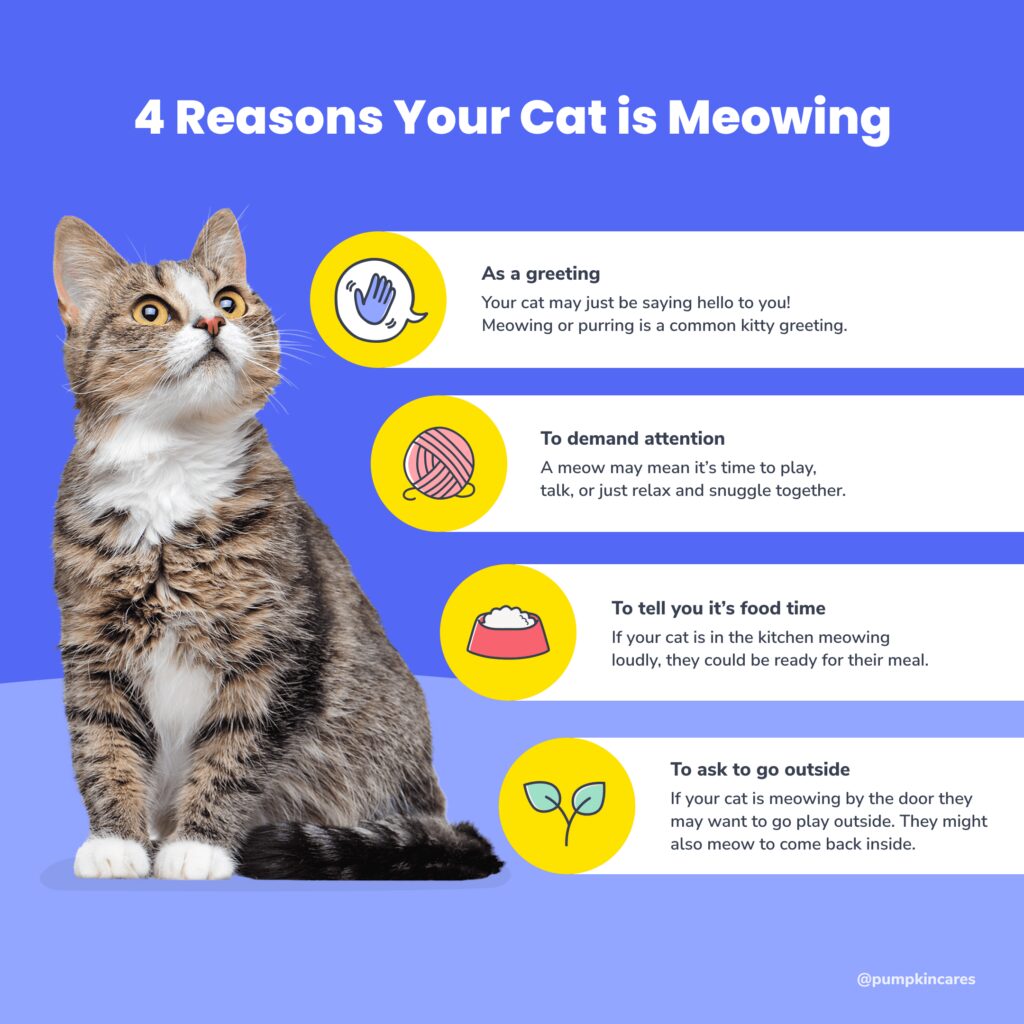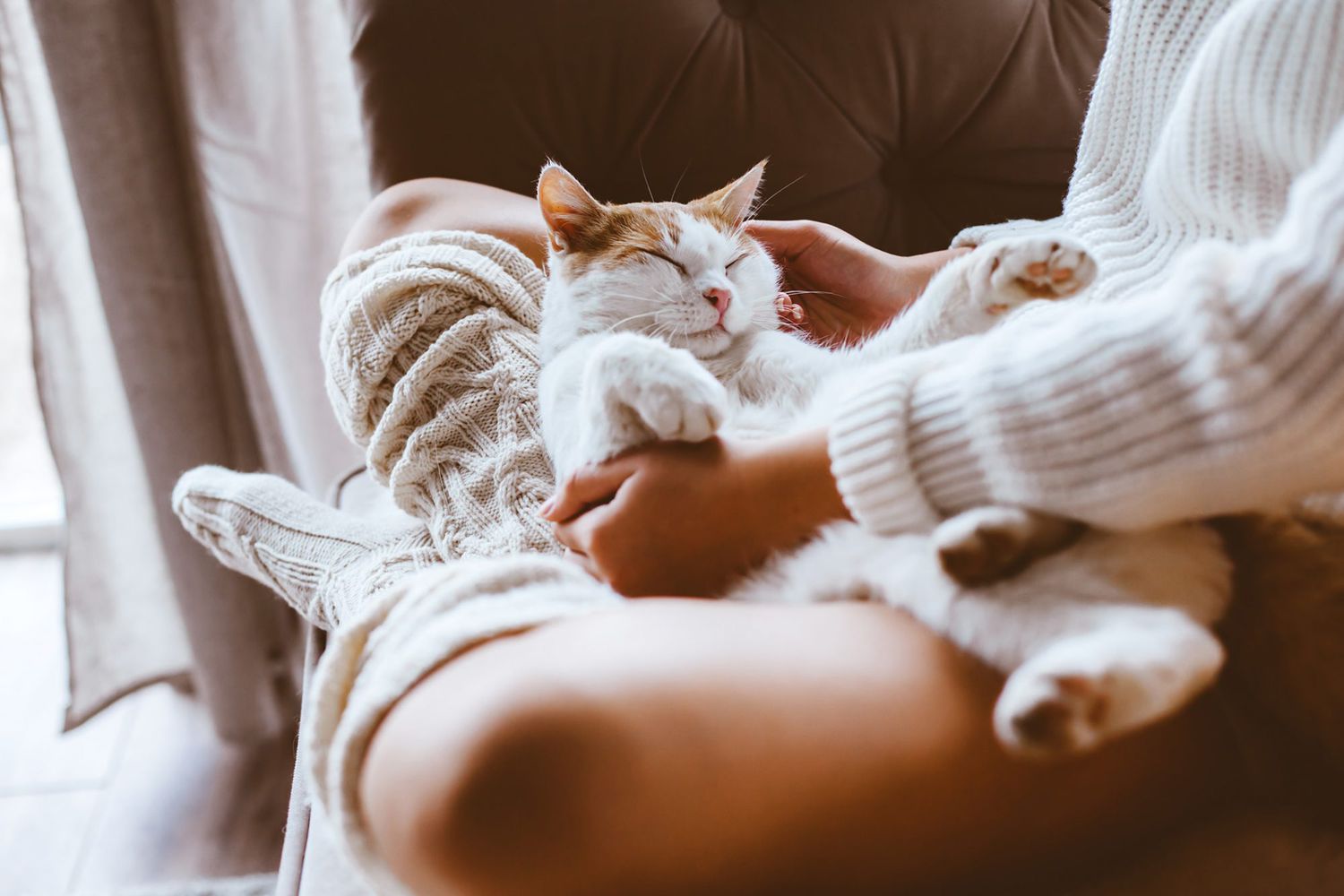Welcome to the fascinating world of feline communication! Have you ever wondered why some cats choose not to meow? It turns out that there's more to those silent whiskers than meets the eye. Exploring this topic will not only deepen your understanding of our furry friends, but it may also help you build a stronger bond with your own cat. Did you know that approximately 70% of cats communicate primarily through body language rather than vocalizations? By unraveling the mysteries behind their silence, we can unlock a whole new level of connection and companionship with these enigmatic creatures. So, get ready to embark on a journey into the secret language of silent whiskers – a journey that will forever change the way you see and interact with cats.
Key Takeaways:
- Cats have the ability to communicate without using meows.
- Silent whiskers can be a sign of contentment or relaxation in cats.
- Cats may choose not to meow as a form of self-preservation or defense mechanism.
- Understanding silent communication cues can help strengthen the bond between cats and their owners.
- Observing silent whiskers can provide valuable insights into a cat's emotional state and well-being.
1. Discovering Silent Whiskers: Why Cats Sometimes Stay Quiet
The Mysterious Silence of Cats
Have you ever wondered why some cats are so quiet? It's like they have a secret language that only they understand. Well, the truth is, cats communicate in many different ways, and sometimes staying silent is just one of them.
Cats have a unique way of expressing themselves through their body language and facial expressions. They use their whiskers to convey emotions and intentions to other cats and even to us humans. When a cat stays quiet, it may be because they are using their whiskers to communicate instead.
Whisker Language: A Silent Conversation
Imagine if you could talk without saying a word - that's what cats do with their whiskers! When a cat's whiskers are relaxed and facing forward, it means they are feeling calm and content. But if their whiskers are pulled back tightly against their face, it could indicate fear or aggression.
Cats also use their whiskers to navigate through tight spaces. Their whiskers can detect changes in air pressure, helping them determine if they can fit into a certain space or not. So sometimes, when a cat stays quiet, it might be because they're focused on using their whiskers to explore their surroundings silently.
Why Do Some Cats Stay Quiet?
- Cats may stay quiet when they're feeling relaxed and content.
- They might use their whiskers to communicate instead of meowing.
- Silence can also be a sign of fear or aggression in cats.
- Cats may stay quiet when using their whiskers to navigate through tight spaces silently.
2. How Cats Talk to Humans and Other Animals: Communication Secrets Revealed
The Language of Cats
Cats have a unique way of communicating with humans and other animals. While they may not speak our language, they use a combination of vocalizations, body language, and scent marking to convey their messages. Meowing is the most common vocalization cats use to communicate with humans. It can mean various things, such as hunger, attention-seeking, or simply a greeting. However, it's important to note that not all cats meow equally or at all. Some cats prefer other forms of communication, like purring or rubbing against you.
Understanding Body Language
In addition to vocalizations, cats also rely heavily on body language to express themselves. They use their tails, ears, eyes, and posture to convey different emotions and intentions. For example, a cat with an upright tail is usually feeling confident and friendly, while a tail tucked between the legs indicates fear or submission. Similarly, dilated pupils can indicate excitement or aggression, while narrowed eyes may signal contentment.
To better understand your cat's communication cues, observe their body language in different situations. Pay attention to how they position their ears and tail, as well as any changes in their facial expressions. By learning these subtle signals, you can develop a deeper connection with your feline companion.
The Power of Scent
Cats also communicate through scent marking. They have scent glands located on various parts of their bodies which release pheromones that carry specific messages. When a cat rubs its face against you or furniture, it's leaving behind its scent as a way of marking its territory and expressing familiarity.
Additionally, cats have an incredible sense of smell that allows them to detect pheromones left by other animals or even detect certain health conditions in humans. This ability helps them communicate with other animals and can also explain why your cat may act differently around certain people or objects.
Understanding how cats communicate is essential for building a strong bond with your feline friend. By paying attention to their vocalizations, body language, and scent marking, you can better understand their needs and emotions.

3. The Mystery of Silent Meows: Understanding Why Some Cats Choose Not to Meow
The Science Behind Silent Meows
While most cats are known for their meowing, some cats choose not to vocalize as much or at all. This phenomenon is often referred to as "silent meows." There can be various reasons why a cat may opt for silent communication.
One possible explanation is that some cats have learned that meowing doesn't always yield the desired response from humans. They may have discovered alternative ways to communicate their needs effectively without using vocalizations. For example, they might use body language or subtle movements to convey their messages.
Another reason for silent meows could be related to individual personality traits. Just like humans, cats have unique personalities, and some may simply prefer quieter forms of communication. These cats might rely more on purring or rubbing against you as a way of expressing themselves.
Health Issues and Silent Meows
It's important to note that if your cat suddenly stops meowing or significantly reduces its vocalizations, it could be a sign of an underlying health issue. Cats may become silent when they are in pain or discomfort. Dental problems, throat infections, or even stress-related issues can affect a cat's ability or willingness to meow.
If you notice any changes in your cat's vocal behavior accompanied by other signs of illness, it's crucial to consult a veterinarian. They can examine your cat thoroughly and determine if there are any underlying health concerns causing the change in vocalization.
Understanding the reasons behind silent meows can help you better communicate with your cat and ensure their well-being. By paying attention to their non-verbal cues and monitoring any changes in their behavior, you can provide the care and support they need.
4. Does a Cat's Breed Impact its Silence? Exploring the Connection
The Role of Genetics
When it comes to a cat's vocalization tendencies, genetics can play a role. Different cat breeds have varying levels of vocalizations. Some breeds, like Siamese cats, are known for being more talkative than others. These breeds have a genetic predisposition towards meowing frequently and loudly.
On the other hand, certain breeds may be naturally quieter or less inclined to meow excessively. For example, the British Shorthair breed is generally known for being calm and reserved, which often translates into less vocalization compared to more energetic breeds.
Individual Variation
While breed characteristics can give us some insights into a cat's vocal tendencies, it's important to remember that individual variation exists within each breed. Not all cats of a particular breed will exhibit the same level of vocalization. Factors such as upbringing, socialization, and personality also influence how much a cat chooses to meow.
It's essential to consider both genetics and individuality when exploring the connection between a cat's breed and its silence. Understanding these factors can help you manage your expectations regarding your cat's vocal behavior based on its breed but also appreciate the unique qualities that make each feline companion special.
5. Uncovering Health Issues: Why Your Cat Might Stop Meowing
Understanding the Importance of Meowing in Cats
When it comes to communication, meowing is a vital tool for cats. It allows them to express their needs and emotions to their owners. However, if your cat suddenly stops meowing, it could be a sign of an underlying health issue. Cats may become silent when they are in pain or discomfort, as meowing requires vocalization that can be painful for them. Therefore, it is crucial to pay attention to any changes in your cat's vocal behavior.
Possible Health Conditions That Can Affect Meowing
There are several health conditions that can cause a cat to stop meowing. One common issue is laryngitis, which is the inflammation of the vocal cords. This can result from excessive meowing or other factors such as respiratory infections or allergies. Another possible cause could be dental problems, as oral pain can make it difficult for cats to produce sounds. Additionally, certain neurological disorders or thyroid imbalances can also affect a cat's ability to meow.
What You Can Do
If you notice that your cat has stopped meowing, it is essential to consult with a veterinarian. They will be able to examine your cat and determine the underlying cause of this change in behavior. In some cases, simple treatments such as medication or dental care may resolve the issue. However, more severe conditions may require further investigation and specialized treatment options.
6. Cracking the Code: How to Better Understand Your Silent Feline Companion
Decoding Non-Verbal Communication in Cats
While cats may not always use verbal cues like meowing to communicate, they have various non-verbal ways to express their needs and emotions. Understanding these cues can help you develop a stronger bond with your feline companion. Some common non-verbal communication methods include body language, facial expressions, and tail movements. By observing these signals, you can better understand what your cat is trying to convey.
Building Trust and Establishing Communication
Developing a strong relationship with your cat requires patience and trust-building. Spend quality time with your feline friend, allowing them to approach you on their terms. Avoid forcing interactions or invading their personal space. Instead, create a safe and comfortable environment where they feel secure enough to communicate with you in their own unique way. By respecting their boundaries and responding positively to their non-verbal cues, you can establish effective communication channels.
Tips for Better Communication
- Observe your cat's body language: Pay attention to the position of their ears, tail, and overall posture.
- Respect personal space: Allow your cat to come to you when they are ready for interaction.
- Use positive reinforcement: Reward desired behaviors with treats or praise.
- Be patient: Building trust takes time; don't rush the process.
7. Beyond Meows: Alternative Ways for Cats to Express Their Needs Effectively
Understanding Different Forms of Cat Communication
While meowing is the most common form of vocal communication in cats, it is not the only way they express themselves. Cats have various alternative methods to convey their needs effectively. For example, purring is often associated with contentment or relaxation, while hissing indicates fear or aggression. Additionally, cats use scent marking through rubbing against objects or scratching surfaces as a way of marking territory or communicating with other cats.
Encouraging Effective Communication Methods
As a cat owner, you can help your feline companion express their needs in alternative ways. Providing scratching posts and appropriate toys can redirect their natural behaviors and prevent destructive habits. Additionally, creating a safe outdoor space or using pheromone diffusers indoors can help reduce stress and promote positive communication. By understanding and encouraging these alternative communication methods, you can ensure a harmonious relationship with your cat.
Creating an Enriching Environment
- Provide scratching posts and toys: This allows cats to engage in natural behaviors while protecting your furniture.
- Establish safe outdoor spaces: If possible, create an enclosed outdoor area where your cat can explore safely.
- Use pheromone diffusers: These products release calming scents that can help reduce stress and promote effective communication.
- Spend quality time together: Regular play sessions and grooming sessions strengthen the bond between you and your cat.
In conclusion, cats have the ability to communicate without meowing, using other forms of body language and vocalizations. Understanding these silent whiskers can help us better understand our feline friends and strengthen our bond with them.
Why does my cat choose not to meow?
Certain cats are more quiet and do not meow often. This is completely normal as long as they appear healthy in other aspects. However, if your cat used to meow but has abruptly stopped, it is important to look into the matter. They could be experiencing stress, inflammation, infection, or even cancer.
Why is my cat's meow suddenly silent?
Cat laryngitis is commonly caused by infectious diseases like upper respiratory infections (cat cold or URI), calicivirus, or rhinotracheitis. However, there are various other conditions that can lead to loss of voice in cats, such as exposure to irritants like smoke or dust and blockage in the larynx.
What does a short quiet meow mean?
If your cat makes a low-pitched meow, it indicates that they are complaining and feeling unhappy. It is essential to provide them with attention or food, as they may remain in a bad mood for an extended period. Their discontent could also be a result of something you did, such as accidentally leaving them outside.
How do cats communicate with each other if they don t meow?
Cats communicate with each other through physical contact, such as greeting each other with nose touches and showing affection by rubbing their heads and bodies against each other. They may also hook their tails and rub them together. It is not common for cats to rub against each other's backs.
What is the fading kitten syndrome?
Fading kitten syndrome is a condition that occurs in newborn kittens, where they struggle to grow and are at risk of dying prematurely, usually before they are able to be weaned. The symptoms of this syndrome can vary depending on the underlying cause and may include excessive crying, low body temperature, lack of energy, separating from their littermates, weight loss, and difficulty with sucking. This information was last updated on February 13, 2023.
What is cat trilling?
Cat trilling is a type of vocal communication that cats use to communicate with other cats, humans, and even other animals in their home. It is a repetitive, high-pitched sound that is emitted in short bursts. Trilling is also referred to as chirping.

















